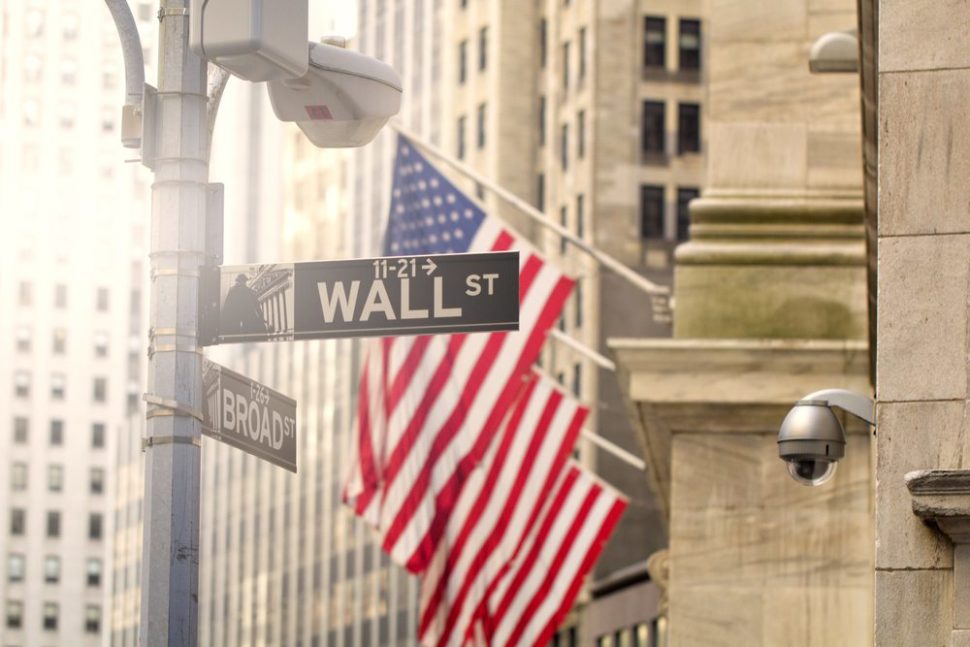The 2008 financial crisis is nothing compared to what may be looming ahead for Wall Street–a total assimilation into current digital eCommerce players like Amazon and Google.
The rise of Silicon Valley startups disrupted many conventional retailers. Similarly, online retailers increasingly threaten big-box retailers like Wal-Mart despite moves to counter new challenges.
McKinsey’s latest report on ROE for the global banking industry reinforces a new claim that eCommerce is more of a competitor for Wall Street than FinTech.
In fact, there are 5 ways eCommerce is Wall Street’s biggest threat right now.
5 Ways #eCommerce over #FinTech Disrupts Wall StreetClick To TweetAn Ailing Banking Industry; A Flourishing eCommerce Ecosystem
The 2008 financial crisis devastated the banking industry. As seen on the FDIC website, dozens of banks went belly up in 2008 alone. Among these: Washington Mutual with more than $300-billion USD in assets.
The only way many of the banks remained relatively unscathed was thanks to government bailouts. Some say that the bailout is still happening. This bodes further tumult in light of McKinsey’s latest report on the global banking industry.
Five main tenets spell impending disaster for banks: proprietary credit cards, loyalty and incentive programs, integration with other platforms or services, diversification, and accessibility.
All of these add up to an ecosystem where banks are the bottom of the food chain.
5 Ways eCommerce is Wall Street’s Biggest Threat
1. Proprietary Credit Cards
Major online retailers Amazon, AliBaba, and Rakuten Ichiba pose giant threats to traditional banks. At the heart of this threat are Amazon and Rakuten both offering proprietary credit cards that keep you away from your traditional bank-backed card. Perks include cash back opportunities and exclusive financing options.
Rakuten’s card also features the Super Points Program which plays into the second reason of 5 Ways eCommerce threatens Wall Street.
2. Loyalty and Incentive Programs
How many people do you know right now who are absolutely satisfied with their banking experience? That 1% interest on a savings account might add up if you have a tidy sum there. But for the average person, that interest is utterly negligible.

With online retailers from Amazon to Birchbox, you accrue points or “e-money” as you purchase things. This money can ONLY be used on items available through the proprietary retailer. Not only does it reward you for purchasing from this platform, it incentivizes you to purchase from them in the future.
Rakuten’s Super Points Program offers 1 point per 100 yen spent on utility charges and everyday shopping. Not only that: you earn four times the point for purchases on the Rakuten Ichiba platform.
Bonus: the card is also “permanently free”–a significant difference from most credit cards including Amazon’s. The cost of Amazon Prime ($99/year) is required to qualify for their proprietary card.
3. Integration With Other Platforms or Services
Integrating with other platforms or services ensures the survival of online retailers. Whether it is collaborations with clothing brands or technology companies, this integration benefits both parties. It also benefits consumers in that the availability of these services or products increases (see numbers four and five on this list).
However, Rakuten Ichiba takes integration to a new level with a messaging app and operation of a large online travel portal. That brings us to the fourth way eCommerce is a growing threat to Wall Street banks.
4. Diversification of Offerings, Uses, & Services
Increasingly, leveraging existing supply chain and business processes for multiple purposes is the norm. Around 900 million worldwide users employ Viber, Rakuten’s messaging app. Rakuten Travel books 1.8 million rooms per month.
Amazon expanded into media creation years ago with successful original programming like Transparent, recent reboot The Tick, and a future series based on Philip K. Dick’s short stories.
If users go to an online retailer for goods, media, AND services, having these retailers become a “one stop shop” where people bank is not far-fetched.
5. The Biggest Threat of All: Accessibility
The fifth item on the list of 5 ways eCommerce, not FinTech, is Wall Street’s biggest threat is simple, but gargantuan: accessibility. Though banks have improved in their accessibility measures over recent years, online retailers are still leagues ahead.

One of the most telling points of data from the McKinsey report regarding how geography affected a bank’s valuation. The twist: geography is no longer a major factor. Business model and execution strategies are far more impactful. This could be due to increased accessibility.
Chase only recently adopted a better quickpay system with its acquisition of Zelle (which Wells Fargo also uses), a direct Venmo competitor. But many banks still require users to visit brick and mortar stores for more involved transactions or needs such as opening new accounts or withdrawing any amount of physical money. Of course, the latter can be done with a self-service ATM.
How Did Online Retailers Sneak Up on Wall Street?
The global banking industry was too busy competing with Silicon Valley and FinTech to notice online retailers. As the McKinsey report states:
“While we noted the presence of the platform companies lurking in the shadows in 2015, we thought that fintechs would provide the chief digital threat. Instead, banks have been able to parry many of the fintechs’ moves and have joined forces with them in several cases — while the platform companies are emerging as a formidable force.”
The Bottom Line for Wall Street & Investors
If online retailers can corner areas in which the banking industry is lacking, it could spell disaster in 2018 and beyond. After all, a study from 2011 showed that banks were more likely to make riskier investments after the bailout.
Furthermore, supporters of the 2008 bailout knew that it wouldn’t prevent future financial crises either. In that situation, however, FinTech may actually prove to be an ally to Wall Street instead of a competitor.


















How To Find Your Lost Cryptocurrency.
My name is George Lucas. I want to testify about GEO COORDINATES HACKER. They helped me recover my stolen crypto worth $370,000 through their hacking skills. I tried it. I was skeptical but it worked and I got my money back, I’m so glad I came across them early because I thought I was never going to get my money back from those fake online investments. I want to recommend this great hacker to anyone that truly needs an urgent solution. You can also contact them via
Email; geovcoordinateshacker@proton.me
Email; geovcoordinateshacker@gmail.com Telegram ( @Geocoordinateshacker )Website; https://geovcoordinateshac.wixsite.com/geo-coordinates-hack
RECOVER YOUR LOST/STOLEN BITCOIN WITH THE HELP OF GEO COORDINATES HACKER
Cryptocurrency investment halted and turned my life upside down after I invested almost everything that I had worked for all my life. I found myself in a desperate situation after losing 3.7 Million to Bitcoin investment for cryptocurrency. I was depressed and sad until my research took me to a website of GEO COORDINATES HACKER. I explained my situation to them and they assured me to help me get my money back. I gave it a try and they definitely did a great job, all my money was recovered back into my wallet account just within a few days. I’m glad I was able to recover my stolen crypto. Their service is truly reliable. I’m grateful to them. You can get in touch with them through their
Email; geovcoordinateshacker@proton.meEmail; geovcoordinateshacker@gmail.com Telegram ( @Geocoordinateshacker )Website; https://geovcoordinateshac.wixsite.com/geo-coordinates-hack
RECOVER YOUR LOST/STOLEN BITCOIN WITH THE HELP OF GEO COORDINATES HACKER
Cryptocurrency investment halted and turned my life upside down after I invested almost everything that I had worked for all my life. I found myself in a desperate situation after losing 3.7 Million to Bitcoin investment for cryptocurrency. I was depressed and sad until my research took me to a website of GEO COORDINATES HACKER. I explained my situation to them and they assured me to help me get my money back. I gave it a try and they definitely did a great job, all my money was recovered back into my wallet account just within a few days. I’m glad I was able to recover my stolen crypto. Their service is truly reliable. I’m grateful to them. You can get in touch with them through their
Email; geovcoordinateshacker@proton.meEmail; geovcoordinateshacker@gmail.com Telegram ( @Geocoordinateshacker )Website; https://geovcoordinateshac.wixsite.com/geo-coordinates-hack